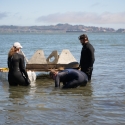News Listing
-
February 27, 2025Sadly, it’s the sign of the times. Just north of us, Sonoma State University is eliminating a number of academic departments…
-
 February 16, 2025On a recent Monday afternoon, Katharyn Boyer gazed out toward a parking lot from her office on the northern coastline of Tib…
February 16, 2025On a recent Monday afternoon, Katharyn Boyer gazed out toward a parking lot from her office on the northern coastline of Tib… -
 February 13, 2025San Francisco State University is closing its Romberg Tiburon Campus due to lack of funding, throwing marine biology student…
February 13, 2025San Francisco State University is closing its Romberg Tiburon Campus due to lack of funding, throwing marine biology student… -
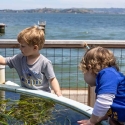 October 04, 2024Across the Golden Gate Bridge in Tiburon is the only marine lab on the San Francisco Bay: San Francisco State University’s E…
October 04, 2024Across the Golden Gate Bridge in Tiburon is the only marine lab on the San Francisco Bay: San Francisco State University’s E… -
 July 09, 2024With faculty support, a student expands class project into a graduate research project. It’s not often that one gets to thro…
July 09, 2024With faculty support, a student expands class project into a graduate research project. It’s not often that one gets to thro… -
May 22, 2024Contrary to the expectations, ocean acidification may not prompt the production of toxic domoic acid. Albert Hitchcock’s fil…
-
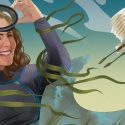 March 21, 2024Professor Katharyn Boyer, interim executive director of San Francisco State University’s Estuary and Ocean Science Center (E…
March 21, 2024Professor Katharyn Boyer, interim executive director of San Francisco State University’s Estuary and Ocean Science Center (E… -
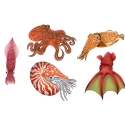 March 07, 2024A new EOS Center program is supporting artistic marine scientists and expanding science education opportunities “Pictures re…
March 07, 2024A new EOS Center program is supporting artistic marine scientists and expanding science education opportunities “Pictures re… -
February 28, 2024New eelgrass habitat model to supercharge conservation efforts to prevent acidification, erosion, and other climate change i…
-
February 20, 2024Environmental Educator This award recognizes the achievements of an individual who has made significant contributions to pu…
-
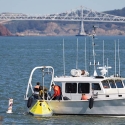 September 25, 2023The SF State research center is taking a multipronged approach to environmental issues affecting the San Francisco Bay. San…
September 25, 2023The SF State research center is taking a multipronged approach to environmental issues affecting the San Francisco Bay. San… -
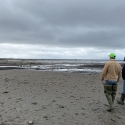 May 17, 2023The shore remained elusive on the drizzly May morning as a crack technical team of expert engineers and scientists assembled…
May 17, 2023The shore remained elusive on the drizzly May morning as a crack technical team of expert engineers and scientists assembled… -
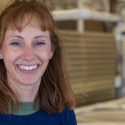 May 04, 2023Catie Thow Garcia (M.S., ’22) credits her experiences at the University’s EOS Center for her newly minted government positio…
May 04, 2023Catie Thow Garcia (M.S., ’22) credits her experiences at the University’s EOS Center for her newly minted government positio… -
December 02, 2022The California State Coastal Conservatory is investing $3.5M on sea-level rise and shoreline defense projects like living sh…
-
October 05, 2022The largest algal bloom to threaten San Francisco Bay in recent memory has finally receded, but the creature that triggered…
-
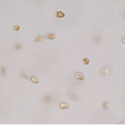 September 21, 2022At times this summer, the shores of San Francisco Bay looked like a piscine battlefront — strewn with dead white and green s…
September 21, 2022At times this summer, the shores of San Francisco Bay looked like a piscine battlefront — strewn with dead white and green s… -
September 19, 2022SAN FRANCISCO (KGO) -- Marine scientist Dr. William Cochlan is old friends with the tiny algae blamed for the recent devasta…
-
September 02, 2022A harmful algal bloom has been slaughtering fish across the San Francisco Bay for weeks, but as anglers continue to catch fi…
-
July 21, 2022Read the full story on SF State's Strategic Marketing & Communication's website. A group of San Francisco State Univer…
-
June 01, 2022Dr. Katharyn Boyer will become the interim Executive Director of the Estuary & Ocean Science (EOS) Center starting June…
-
February 23, 2022The EOS Center is proud to announce three 2022 Fellows. California Sea Grant's State Fellows Program provides a unique educa…
-
February 17, 2022Each year, the Association for the Sciences of Limnology and Oceanography presents the A.C. Redfield Lifetime Achievement Aw…
-
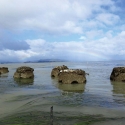 October 14, 2021On a cloudy and brisk summer morning, I’m at the Point Pinole Regional Shoreline in Richmond, taking in its towering stands…
October 14, 2021On a cloudy and brisk summer morning, I’m at the Point Pinole Regional Shoreline in Richmond, taking in its towering stands… -
August 19, 2021Beginning in 2015, the United States Environmental Protection Agency’s (EPA’s) National Estuary Program (NEP) started a coll…
-
 July 26, 2021Researchers are launching the next phase of a multiyear project that could elevate or reroute a flood-prone stretch of North…
July 26, 2021Researchers are launching the next phase of a multiyear project that could elevate or reroute a flood-prone stretch of North… -
July 07, 2021Congratulations Dr. Katharyn Boyer, winner of the 2021 Coastal and Estuarine Research Federation William A. Niering Outstand…
-
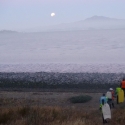 June 21, 2021Kathy Boyer is used to getting up in the dark so she can slide across the mudflats into the Bay at first light. But this pas…
June 21, 2021Kathy Boyer is used to getting up in the dark so she can slide across the mudflats into the Bay at first light. But this pas… -
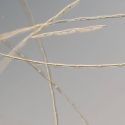 June 09, 2021Researchers find ocean acidification threatens local fisheries Outside the Golden Gate Bridge, in California’s coastal water…
June 09, 2021Researchers find ocean acidification threatens local fisheries Outside the Golden Gate Bridge, in California’s coastal water… -
May 24, 2021EOS Center study has implications for marine mammal safety In a recent study, researchers found that recreational boats and…
-
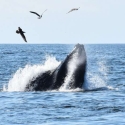 May 18, 2021If you lived on the West Coast anytime in the past several years, you may remember news of "the Blob"—not a horror movie mon…
May 18, 2021If you lived on the West Coast anytime in the past several years, you may remember news of "the Blob"—not a horror movie mon… -
May 03, 2021After a brief hiatus due to COVID-19, our Rosenberg Institute Public Forum is back. And Virtual.
-
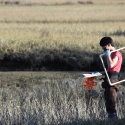 Students at the University’s Estuary and Ocean Science Center ‘paddle against the tide’ to continue thesis work Spring is a…
Students at the University’s Estuary and Ocean Science Center ‘paddle against the tide’ to continue thesis work Spring is a…
